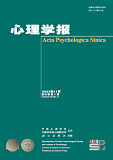Extensive studies have demonstrated the buffering effect of risk factors or the promotion effect of protective assets within each setting of family, school, or community on psychological crisis in adolescence. Although many adolescents expose to risks and assets in multiple contexts, the independent and interactive effects of such cross-contextual factors on multiple psychological crisis have not been studied. This study addressed this gap by examining latent patterns of risk factors or/and protective assets in multiple contexts on non-lethal crisis state (CS), non-suicidal self-injury (NSSI), suicide attempt (SA) in adolescence. Further, based on the perspectives of positive youth development and psychological pain, this study explored the specific patterns considered as immune barriers to psychological crisis, and specific patterns with cumulative and clustering effects on psychological crisis.
A sample of 2249 junior middle school students were invited to participant. The adolescents completed psychological crisis (including CS, NSSI, SA), three-dimensional psychological pain (TDPPS), positive youth development (PYD), family conflict, parental control, campus stressors, community unsafety, family resilience, parental involvement, friendship quality, perceived teacher autonomy support, neighborhood friendship and community engagement scales. Based on Latent Profile Analysis (LPA), the patterns of risk factors and TDPPS, patterns of assets and PYD and patterns of risks and assets in multiple contexts were analyzed using Mplus7.4. Further, the predictive effects of distinct patterns on psychological crisis and the relative mediated effects of TDPPS and PYD were analyzed by SPSS21.0.
The results showed that: (1) Based on the risk perspective, adolescents at high family risk usually had higher risk in school and community context. The level of CS, NSSI, SA increased with the level of risk factors. Notably, compared to moderate risk-high painful feeling class, adolescents in high family risk-high pain avoidance class had higher level of SA (OR = 6.38, p < 0.001) and NSSI (OR = 2.32, p < 0.001). (2) Based on the protective perspective, the more assets adolescents had, the higher level of PYD, and the lower level of CS, NSSI, SA they were. Compared to high combined protection-high PYD class, adolescents in moderate family protection-high PYD class have similar level of CS (p = 0.087) and SA (OR = 6.26, p = 0.096). Compared to moderate family protection-high PYD class, adolescents in moderate community protection-moderate PYD class have similar level of NSSI (OR = 1.16, p = 0.077). (3) Based on the integration perspective, the risk factors and protective assets across multiple contexts were divided into four patterns: high family risk-low assets class (class1, 8.38%), high school risk-moderate assets class (class2, 14.72%), balanced class (class3, 53.41%) and low risk-high assets class (class4, 23.49%). Compared to class3, adolescents in class1 and class2 had higher level of CS, NSSI, and SA, adolescents in class4 had lower level of CS, NSSI, and SA. Taken the balanced class as reference group, the relative mediated effects of TDPPS and PYD between the other three classes and CS, NSSI, and SA were significant.
This study deepened the understanding of the effects of distinct patterns of family, school and community risks and TDPPS on psychological crisis in adolescences, emerging on cumulative and clusters effects. Psychological crisis could be buffered by distinct patterns of assets across family, school and community context and PYD. Adolescent crisis intervention should simultaneously focus on addressing risks, and establishing a supportive system across multiple contexts.




